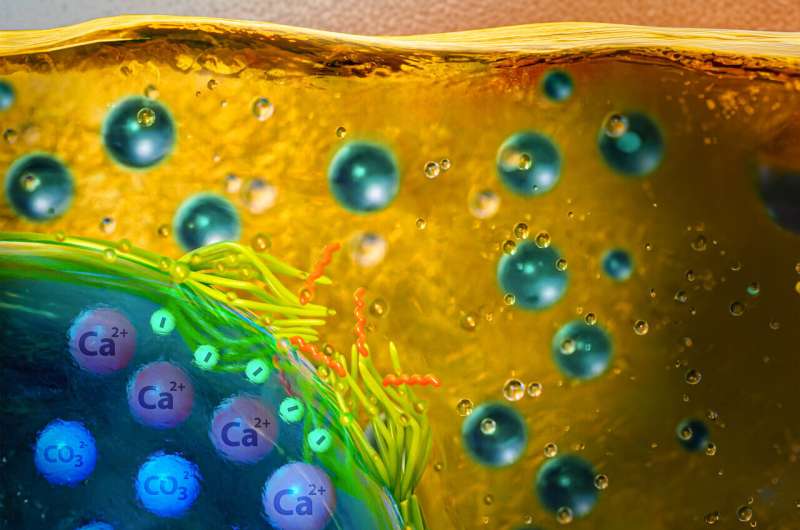
In the process of oil extraction, hard mineral buildup inside the pipes and equipment can cause serious operational damage, safety issues such as pipe explosion and significant economic losses. The current methods for descaling mineral buildup, however, can adversely impact the environment.
Penn State researchers have developed a new nanoparticle that can prevent scaling and stabilize a commonly used emulsion, or liquid mixture, potentially making the oil extraction processes more efficient and less harmful to the environment, according to the team. The material can also be used in other equipment handling water-oil emulsions.
Their results were published in ACS Applied Materials & Interfaces. The work was also featured on the journal’s supplementary cover.
“We aimed to tackle the challenge of calcium carbonate formation, known as scaling, in two-phase oil-water systems, dealt with in numerous water-based industries, such as oil and gas sectors,” said corresponding author Amir Sheikhi, associate professor of chemical engineering and the Dorothy Foehr Huck and J. Lloyd Huck Early Career Chair in Biomaterials and Regenerative Engineering.
In many industries, such as oil and gas, pharmaceuticals, cosmetics and food, water co-exists with an immiscible phase—such as an oil or an organic solvent unable to mix with water—making a two-phase system. If this system undergoes scaling, it may cause serious operational and safety hazards, according to Sheikhi, as it blocks pipes and destroys equipment.
“Current anti-scaling solutions either have adverse environmental impacts or are limited to working only in single-phase aqueous media,” Sheikhi said.
To solve this problem, Sheikhi and his team first synthesized a cellulose-based nanoparticle, called anionic hairy cellulose nanocrystals (AHCNC), which was capable of preventing scale formation but was unable to stabilize water-in-oil emulsions.
They then developed a new type of multifunctional, bio-based nanoparticle, called amphiphilic hairy cellulose nanocrystals (AmHCNC), with unique chemical and structural properties that not only prevents scale formation but also stabilizes water-in-oil emulsions, which are common in oil extraction processes, according to the researchers.
“Our innovation lies in the nanoengineering of a type of nanoparticle—AmHCNC—that simultaneously prevents scaling and stabilizes water-in-oil emulsions via the Pickering mechanism—a combination that hasn’t been achieved,” said Sheikhi. The Pickering mechanism refers to a process that stabilizes the interface between two immiscible solvents with small solid particles, such as nanoparticles.
“These anti-scaling particles are bio-based, environmentally safe and cost-effective, offering a sustainable solution to the longstanding industrial problem of scaling.”
The researchers are now looking for partners to test their technology in real-world settings, such as in enhanced oil recovery, to evaluate its performance at a larger scale. They also plan to explore potential applications in other industries, such as cosmetics and food.
“This technology may provide new opportunities for sustainable and safer industrial practices,” said Sheikhi, who also has a courtesy appointment with the Department of Biomedical Engineering in the College of Engineering, the Department of Chemistry in the Eberly College of Science, and The Department of Neurosurgery in the College of Medicine.
More information:
Roya Koshani et al, Antiscaling Pickering Emulsions Enabled by Amphiphilic Hairy Cellulose Nanocrystals, ACS Applied Materials & Interfaces (2024). DOI: 10.1021/acsami.4c03451
Provided by
Pennsylvania State University
Citation:
New nanoparticle prevents mineral buildup in equipment handling water-oil mixtures (2024, September 25)
retrieved 26 September 2024
from https://phys.org/news/2024-09-nanoparticle-mineral-buildup-equipment-oil.html
This document is subject to copyright. Apart from any fair dealing for the purpose of private study or research, no
part may be reproduced without the written permission. The content is provided for information purposes only.


